Field Guide to Lee-Enfield Oilers / Oil Bottles
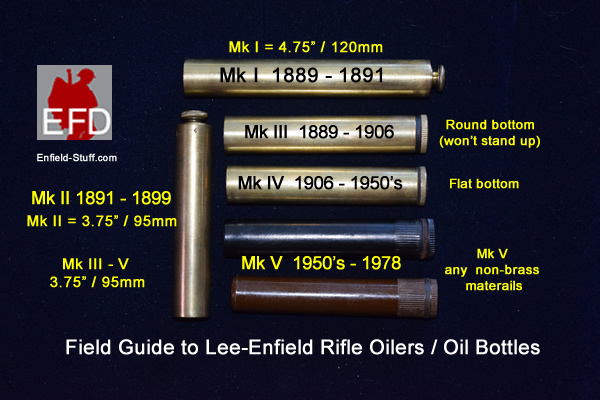
Photo notes: Copyright Enfield-Stuff.com. All rights reserved. Permission is granted to reproduce this field guide above provided that no alterations are made to the text or images.
Your Lee-Enfield oiler/oil bottle was made between 1888 and 1978.
There are five different models (called Marks) of oilers. It is easy to tell them apart.
Click here and we'll show you how to ID your oiler type in three steps. No experience necessary.
 |
ARROWS are almost always some type of Government Ownership Mark. The Broad Arrow is the oldest and most common mark of British government property. Arrows may be alove, above or between letters. There are many variations of Broad Arrow.
Click here to go to the Government Ownership Marks page.
|
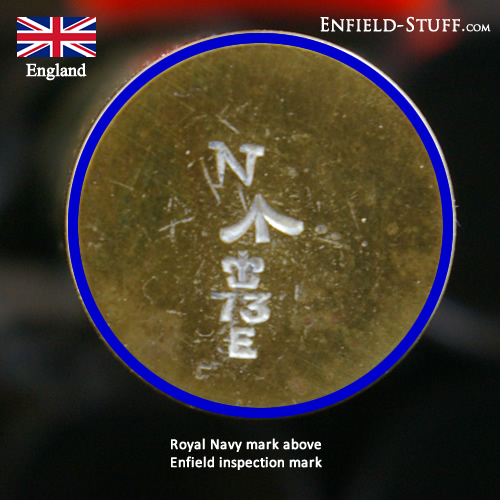 |
CROWNS are usually part of an INSPECTION MARK. The shape of the crown is not significant.
The next row of letters/numbers beneath the crown usually indicates the inspection station code. There were hundreds of inspectors; it is doubtful that the code was assigned to a specific individual.
The letter in the last row (usually B, E, or X) is the factory/arsenal where the inspection took place.
Click here to go to the Fast Mark Finder page.
|
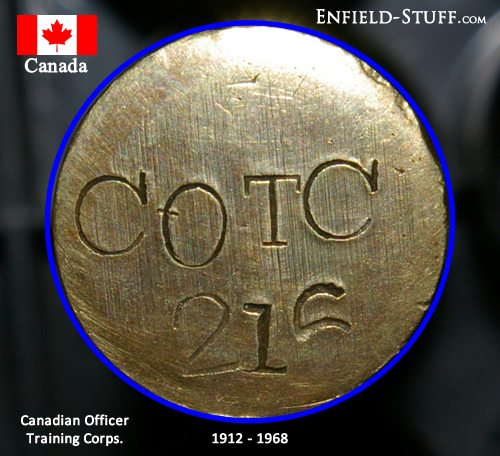 |
NUMBERS, LETTERS and DATES stamped on the CAP are usually an ARMOURERS' MARK. The numbers may include punctuation or dividing marks; marks may also be on the side of the oiler.
There is no table or list that covers all the possible armourers' marks.
|
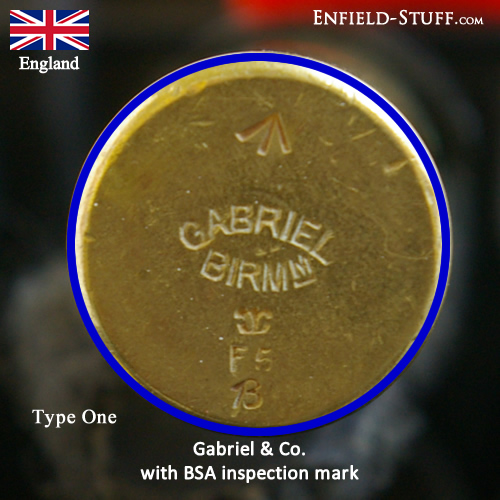 |
NAMES and LETTERS found on the BASE are usually a manufacturers' mark. Virtually all brass oilers manufacturered after 1914 were made by "the trade" - small civilian contractors. Chasing down information about the manufacturer/contractor behind those cryptic names and initials can be a challenge. Fortunately, we've done much of that work for you.
Click here to go to the Fast Mark Finder page.
|
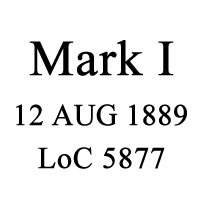 |
Bottle, Oil, Mk I
Judging from the official List of Changes (LoC) dates, the Mark I oilers were in production for about two years. Total rifle production during this time (Magazine Lee-Metford Rifle Mk I) at Enfield, Sparkbrook, BSA Co. and LSA Co., 1889-1892, was about 360,000 units. [1]
We note that when the MK II was introduced two years later, the LoC included "and the alteration of bottles in store." The 4.75" / 120mm Mk I is the rarest oiler, not only because of low production numbers, but because some of those units were subsequently converted to the shorter (3.75" / 95mm) Mark II. |
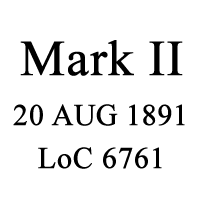 |
Rifle, Magazine, Lee-Metford, Bottle, Oil, (Mk II)
The List of Changes (LoC) description is succinct: "It differs from the Mark I only in being 1-inch shorter."
The Mk II is officially in service a little over seven years before being replaced by the Mk III. Approximately 1.5 Million rifles (presumably with oilers) were produced during this time. [2]
Again, the List of Changes (LoC) that introduces the replacement Mk III, also specifies "the alteration of existing oil bottles of previous pattern." |
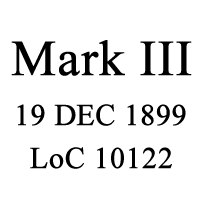 |
Bottle, Oil, Mark III
This mark has "...a larger mouth, to make it suitable for mineral jelly (LoC 10131), and a flat-headed stopper with spoon ...The altered bottle is suitable for rifle oil ..."
The newly-designed oil bottle retains the rounded (convex) bottom of the it's predecessors. |
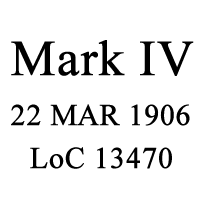 |
Bottle, Oil, Mk IV
Finally, in 1906, someone figures out that a flat-bottom oiler will stand up where you put it, instead of falling over. The design will remain unchanged for the next seventy years. This is the most common Lee-Enfield oiler and remained in production at least until the 1950's.
Occasionally one encounters steel or recessed caps on Mk IV oilers. These are Great War (World War One; 1914-1919) economy measures. The steel caps are unique to oilers manufactured by WESTERN ELECTRIC; the recessed caps sometimes show a HARCOURTS patent mark.
Steel caps are a scarce find as many have succumbed to rust. |
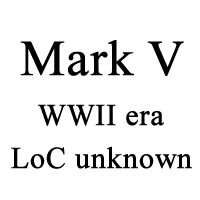 |
Bottle, Oil, Mk V
Approved during WWII (1939-1945) as a production economy, the Mk V oiler is generally bakelite, steel or plastic, often without inspection or maker's markings. There are many variations of spoons. Generally, the amber or transculent oilers tend to be much later post-war production.
|
Page Notes & Sources
[1] Skennerton, Ian; The Lee-Enfield; pages 439 &441.
[2] Skennerton, Ian; The Lee-Enfield; pages 439.
Page Notes & Sources
 |
List of Changes in British War Materials In Relation to Edged Weapons, Firearms and Associated Ammunition and Accoutrements (1979) Skennerton, Ian (Editor) |